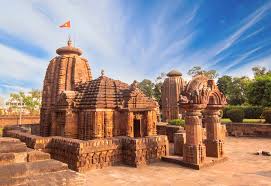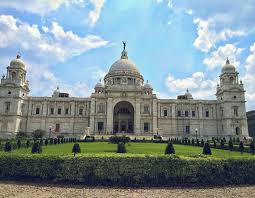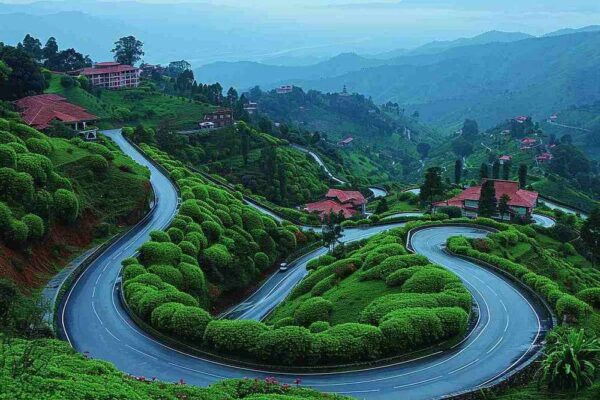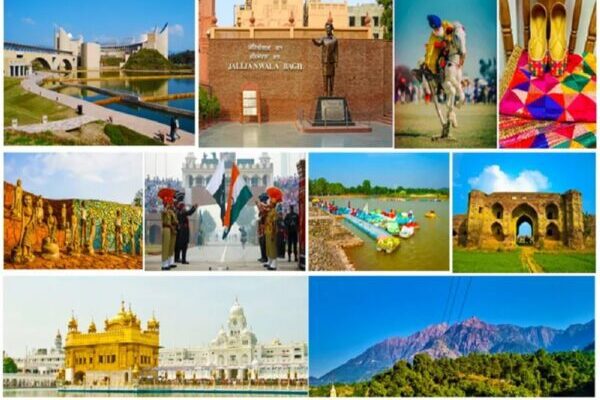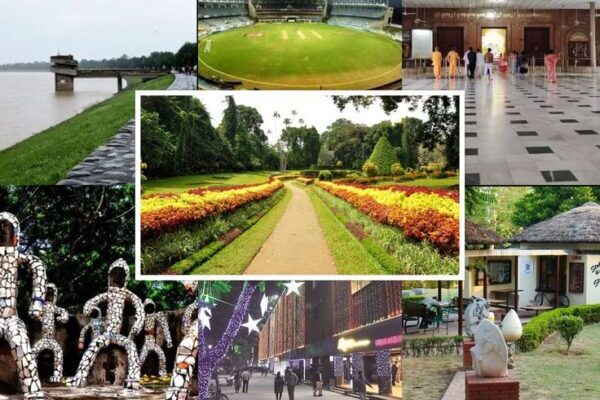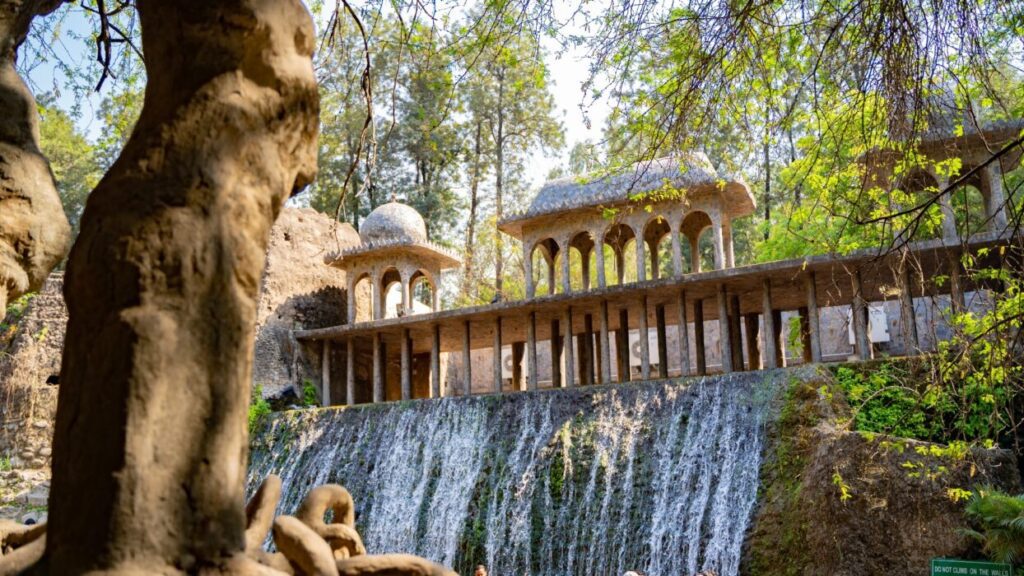
East India
East India, also known as Eastern India, is a culturally rich heritage and geographically diverse region known for its historical significance, natural beauty, classical and folk traditions, temple architecture, and vibrant festivals. From the Himalayas in the north to the Bay of Bengal in the east, the region features fertile plains, coastal areas, forests, and islands, with major rivers such as the Ganges and Mahanadi flowing through it.
The Eastern region of India consists of the Indian states of Bihar, West Bengal, Jharkhand and Odisha (or Orissa), as well as the Union Territories of Andaman and Nicobar Islands. It shares borders with Sikkim in the north, Uttar Pradesh and Chhattisgarh in the west, Andhra Pradesh in the south, the Bay of Bengal in the south-east and the seven sister states of Northeast India in the northeast. This region also shares international boundaries with Nepal, Bhutan, and Bangladesh.
Eastern India has a rich historical legacy dating back to ancient times. It was ruled by several powerful dynasties, including the Magadha, Pala, Sen, Eastern Ganga, Kalinga Kingdom, and Malla. The region saw enormous cultural and religious developments, including the rise of Buddhism and Jainism. During the colonial period, Bengal became a key center of British administration and the Indian independence movement.
A Quick Facts About North India:-
| Total States in Eastern Region of India | 4 |
| Total Union Territory in Eastern Region of India | 1 |
| Land Area in Eastern Region of India< | 418,323 Sq. Kms |
| Largest State of Eastern Region of India (in terms of Population) | Bihar |
| Largest State of Eastern Region of India (in terms of Area) | Orissa or Odisha (covering 155,707 Sq. Kms) |
| Largest City in Eastern Region of India | Kolkata, also known as Calcutta |
| Bihar Foundation Day | 22nd March, 1912 |
| Jharkhand Foundation Day | 15th November, 2000 |
| Popular Places of Tourist Interest in Eastern Region of India | Cultural. Heritage, Adventure, Religious, Hill Stations, Festivals and more |
Eastern Indian cuisine is diverse and flavorful, with a strong emphasis on rice, lentils, and seafood. The most popular dishes in eastern India are macher jhol (fish curry), litti chokha, temple food like the Mahaprasad, Dhusu (rice flour dumplings), Pitha (rice cakes with sweet or savory fillings), and desserts like rasgulla and sandesh. The region also has a vibrant tradition of dance and music. Classical forms such as Odissi dance and Rabindra Sangeet (from Bengal) reflect deep cultural roots, while folk styles like Chhau, Santhali dance, and Baul music portray local stories and spirituality. Tribal rhythms and regional instruments enrich the region’s musical legacy.
The art and craft of Eastern India are profoundly rooted in tradition and regional identity. Madhubani paintings from Bihar and Pattachitra from Odisha are well-known for their intricate designs and mythological themes. The region is also known for terracotta art, stone and wood carvings, and handloom textiles such as Baluchari and Sambalpuri sarees. Tribal crafts, such as bamboo and cane crafting, are widely practiced across Jharkhand and the Andaman and Nicobar Islands.
Furthermore, Eastern India’s architecture showcases a rich fusion of ancient, medieval, and colonial styles. Odisha stands out for its magnificent temples, such as the Konark Sun Temple and Jagannath Temple. In West Bengal and Bihar, the landscape is adorned with colonial buildings, historic Buddhist sites like Nalanda and the Mahabodhi Temple, and intricate terracotta structures, reflecting the region’s diverse heritage.
Eastern region of India is religiously and linguistically diverse. Hinduism is the most prevalent religion, followed by Islam, Sikhism, Buddhism, Christianity, and tribal faith. The primary languages spoken are Hindi, Bengali, Odia, Maithili, Bhojpuri, and Santali, as well as regional tribal languages such as Ho, Mundari, and Kui. Bengali is widely spoken in West Bengal, Odia in Odisha, and Hindi in Bihar and Jharkhand. In the Andaman and Nicobar Islands, Hindi, Bengali, and Nicobarese are widely spoken. English is mostly used in urban areas.
East India offers a diverse and enriching tourism experience, ranging from West Bengal’s colonial architecture and Himalayan scenery to tribal cultures in Jharkhand and Odisha’s historic temples such as the Konark Sun Temple and Jagannath Temple, as well as calm beaches. Bihar attracts pilgrims to the sacred site of Bodh Gaya, while the Andaman and Nicobar Islands enchant with their beautiful beaches and marine life.
Tourists have a wide range of options for theme-based vacations in Eastern India, such as religious sites, eco-tourism, cultural & heritage and more. Each type of vacation shines best in a specific season. For example, hill station getaways (e.g. Darjeeling) would be at their best during summers. Spiritual and religious tours, Beach holidays (e.g. Puri, Bodh Gaya, Andaman Islands) would be at their best during Winter and early spring. Cultural festivals and heritage tours are best enjoyed during festive seasons, especially Rath Yatra and Durga Puja.
The eastern region of India celebrates a number of vibrant fairs and festivals reflecting its rich cultural and traditional roots. Some prominent festivals include Durga Puja (renowned for gigantic idols and processions), Dussehra, Rath Yatra, Dol Purnima (Popularly Known as Holi throughout India), and various tribal festivals such as Sarhul and Chaul in Jharkhand. Other significant events include the Odisha Konark Dance Festival.
Major cities in eastern India, such as Patna, Kolkata, Ranchi, and Bhubaneswar, have international and domestic airports that serve a wide range of destinations worldwide. A vast railway network connects the region to the rest of the country, and national highways provide easy road access to major states and cities. Travellers can easily reach their desired destinations through State-Run and Private buses, local taxis/cabs and personal vehicles.


TOUR PACKAGES OF EAST INDIA
Q: What is the best time to visit Eastern India ?
A: The best time to visit Eastern India is from October to March, when the climate is cool, pleasant, and perfect for sightseeing and outdoor activities.
| Months | Season | Best for |
| October to March | Winter | Sightseeing, cultural festivals, and outdoor activities |
| April to June | Summer | Hill station visits and nature retreats |
| July to September | Monsoon | Enjoying the monsoon and vibrant green scenery, particularly in destinations like Darjeeling and the waterfalls of Odisha |
Q: How many days are needed to explore Eastern India?
A: Exploring Eastern India usually requires 10–14 days to cover the main highlights across West Bengal, Odisha, Bihar, and the Andaman & Nicobar Islands. With a shorter trip of 5–7 days, you can focus on specific regions like Kolkata with the Sundarbans, Odisha’s temples and beaches, or the Andaman Islands. A longer stay allows you to experience the region’s stunning landscapes and vibrant tribal cultures in greater depth.
Q: What are the must visit places in Eastern India?
A: Eastern India’s must-visit spots include Kolkata, the Sundarbans, Puri and Konark in Odisha, and Bodh Gaya in Bihar. For nature and beaches, the Andaman Islands and the scenic Darjeeling are unmissable.
Q: What are the best places to visit during the winter in Eastern India?
A: The best places to visit during winter are Darjeeling and Kalimpong (West Bengal) for scenic snow-dusted hills, Bodh Gaya (Bihar) for a serene spiritual experience, Netarhat and Betla National Park (Jharkhand) for lush forests and wildlife, and Konark Sun Temple, Puri, and Chilika Lake (Odisha) for rich culture and coastal charm. Andaman & Nicobar Islands offer idyllic beaches, exciting water sports, and historic sites like the Cellular Jail.
Q: What are the best places to visit during the summer in Eastern India?
A: The best places to visit during summer are Darjeeling, Kalimpong, and the Sundarbans (West Bengal) provide refreshing hill retreats and mangrove explorations, Rajgir and Nalanda (Bihar) offer historical and spiritual experiences, Netarhat and Parasnath (Jharkhand) charm with green hills, Puri and Chandipur (Odisha) showcase beaches and coastal beauty, while Andaman & Nicobar Islands are ideal for tropical beaches and water adventures.
Q: What are the best places to visit during the monsoon in Eastern India?
A: The best places to visit during the monsoon are Darjeeling and Dooars (West Bengal) come alive with verdant landscapes and tea gardens, Rajgir Hills (Bihar) become picturesque with waterfalls, and Hundru and Dassam Falls (Jharkhand) cascade in full force. Chilika Lake and Bhitarkanika National Park (Odisha) brim with birdlife, while the Andaman & Nicobar Islands provide a tranquil, rain-kissed coastal retreat.
Q: What are the most visited tourist attractions in Eastern India?
A: Some of the most visited tourist attractions in Eastern India include:
- West Bengal: Darjeeling (toy train, tea gardens), Kolkata (Victoria Memorial, Howrah Bridge, Dakshineswar Temple), and the Sundarbans.
- Bihar: Bodh Gaya (Mahabodhi Temple), Nalanda ruins, Rajgir, and Vaishali.
- Jharkhand: Baidyanath Dham (Deoghar), Netarhat, Hundru Falls, and Betla National Park.
- Odisha: Puri (Jagannath Temple, beaches), Konark Sun Temple, Chilika Lake, and Bhubaneswar’s ancient temples.
- Andaman & Nicobar Islands: Radhanagar Beach (Havelock), Cellular Jail, Ross Island, and water sports at Neil Island.
Q: What are some popular activities to do in Eastern India?
A: some of popular activities to do in Eastern India are:
- Enjoy tea garden visits and toy train rides in Darjeeling
- Spiritual experiences at Bodh Gaya and Nalanda
- Wildlife safaris and waterfall treks in Jharkhand
- Temple tours and beach activities in Odisha, and
- Scuba diving, snorkeling, and island hopping in the Andaman & Nicobar Islands.
Q: Which is the best wildlife destination to explore in Eastern India?
A: The Sundarbans in West Bengal is among the finest wildlife destinations in Eastern India, known for its vast mangrove forests and the iconic Royal Bengal Tiger. Other remarkable places include Bhitarkanika National Park in Odisha, famous for saltwater crocodiles and migratory birds, and Betla National Park in Jharkhand, home to elephants and dense forest trails.
Q: Which is the holiest city in Eastern India?
A: The holiest city in Eastern India is Puri (Odisha), renowned for the sacred Jagannath Temple and revered as one of the Char Dham pilgrimage sites for Hindus. Equally significant is Bodh Gaya (Bihar), where Lord Buddha attained enlightenment, making it a prominent pilgrimage destination for Buddhists across the world.
Q: What are some popular historical sites in Eastern India?
A: Some popular historical sites in Eastern India include:
- Victoria Memorial, Howrah Bridge, and the colonial-era buildings of Kolkata (West Bengal).
- Nalanda University ruins, Rajgir’s ancient fort and hot springs, and the Mahabodhi Temple in Bodh Gaya (Bihar).
- Parasnath Hills with Jain temples and Palamu Fort (Jharkhand).
- Konark Sun Temple, Jagannath Temple in Puri, and the caves of Udayagiri & Khandagiri (Odisha).
- Cellular Jail and Ross Island (Andaman & Nicobar Islands).
Q: Are there any hidden gems or offbeat destinations in Eastern India?
A: Yes, Eastern India is home to several hidden gems and offbeat destinations — from Netarhat in Jharkhand, known for its misty hills and waterfalls, to Daringbadi in Odisha with its pine forests and cool climate. Purulia in West Bengal showcases tribal art and rugged landscapes, while Rajgir’s Son Bhandar Caves in Bihar exude ancient charm. For pristine beaches and unspoiled nature, Long Island and Little Andaman in the Andaman & Nicobar Islands are perfect escapes.
Q: What are some of the most popular tourist circuits in Eastern India?
A: Eastern India offers several popular tourist circuits that beautifully blend culture, nature, spirituality, and heritage. Some of the key ones include:
- Buddhist Circuit (Bihar and West Bengal) – following the footsteps of Lord Buddha : (Bodh Gaya- Nalanda – Rajgir – Vaishali – Kushinagar)
- Golden Triangle of Odisha : (Bhubaneswar – Puri – Konak)
- Darjeeling – Kalimpong – Gangtok Circuit (West Bengal and Sikkim)
- Tribal and Nature Circuit (Odisha and Jharkhand) : (Koraput – Simlipal – Netarhat – Betla National Park)
- Coastal Circuit (Odisha and Andaman & Nicobar Islands) : Combining Odisha’s scenic beaches like Gopalpur and Chandipur with the untouched beauty of the Andaman Islands.
Q: Are there any UNESCO World Heritage Sites situated in Eastern India?
A: Yes, Eastern India is home to several UNESCO World Heritage Sites that highlight its diverse cultural and natural splendor:
- Mahabodhi Temple Complex (Bodh Gaya, bihar)
- Sun Temple (Konak, Odisha)
- Darjeeling Himalayan Railway (West Bengal)
- Sundarbans National Park (West bengal)
Q: Which are the famous festivals celebrated in Eastern India?
A: Eastern India is known for its vibrant festivals that beautifully showcase its rich cultural, spiritual, and regional diversity. Some of the most renowned celebrations include Durga Puja (West Bengal), Rath Yatra (Odisha), Chhath Puja (Bihar and Jharkhand) Makar Sankranti & Poush Mela (West Bengal), Karma Festival (Jharkhand & Odisha) and Island Tourism Festival (Andaman and Nicobar Islands).
Q: What are popular things to buy in Eastern India?
A: Eastern India showcases a rich blend of traditional handicrafts, textiles, and regional specialties that capture its diverse cultural heritage. Popular items to buy include:
- Bihar: Exquisite Madhubani paintings, Sujani embroidery, lac bangles, and Bhagalpur’s famous Tussar silk.
- Jharkhand: Intricate Dokra metal crafts, tribal jewelry, bamboo and cane products, and handwoven Tussar silk.
- Odisha: Iconic Pattachitra paintings, Cuttack’s silver filigree work, Pipili’s appliqué art, and Sambalpuri or Bomkai sarees.
- West Bengal: Elegant Baluchari and Kantha sarees, Bishnupur’s terracotta crafts, Shantiniketan leather goods, and premium Darjeeling tea.
- Andaman & Nicobar Islands: Beautiful shell jewelry, wooden and coconut crafts, and locally sourced spices.
Q: Which Eastern India cuisine should travellers and tourists try?
A: Travellers exploring Eastern India should indulge in its rich and diverse cuisines — from Bihar’s signature Litti Chokha and Thekua to Jharkhand’s Dhuska and Rugra. Odisha delights with Dalma and Chhena Poda, while West Bengal tempts with fish curry, Mishti Doi, and Rosogolla. The Andaman & Nicobar Islands round it off with flavourful seafood infused with tropical and coastal aromas.
Q: Are there vegetarian and vegan options available in Eastern India?
A: Absolutely, Eastern India has a wide array of vegetarian and vegan-friendly options. Classics such as Bihar’s Litti Chokha, Odisha’s Dalma, West Bengal’s vegetable curries, and various rice-based dishes are naturally vegetarian, and many can easily be made vegan by omitting dairy.
Q: Is Eastern India Safe for solo travellers including women?
A: Yes, Eastern India is largely safe for solo travellers, including women, particularly in popular cities and tourist destinations. Taking simple precautions—such as steering clear of isolated areas at night, safeguarding your belongings, and observing local customs—can help make your trip both safe and enjoyable.
Q: What should travellers pack for a trip to Eastern India?
A: Travellers heading to Western India should pack thoughtfully, considering comfort, the region’s climate, and local cultural sensitivities.
- Clothing:
- Lightweight and breathable clothes
- Light Jacket
- Warm clothing if visiting hill stations like Darjeeling or during winter
- Shawl or Scarf
- Swimwear for beaches and pool
- Footwear:
- Comfortable sandals or Flip-flop
- Sun Protection:
- Sunglasses
- Sunscreen
- Hat/ Caps
- Health and Hygiene:
- Personal medication
- First -aid kit
- Personal care products
- Hand Sanitizer
- Mosquito repellent
- Electronics:
- Power Bank
- Travel adapter
- Camera
- Travel Documents and Money:
- Passport and Visa
- ID Copies
- Travel Insurance
- Local Currency
- Other important documents
- Miscellaneous:
- Reusable water bottle
- Raincoat and Umbrella
- Reusable shopping bags
Q: Is it easy to get around Eastern India cities using public transport?
A: Yes, getting around Eastern India’s cities using public transport is generally convenient. Options like buses, auto-rickshaws, local trains, and app-based cabs are widely available, making city travel accessible and affordable for both locals and tourists.
Q: What should travellers and tourists wear when visiting temples and religious sites of Eastern India?
A: When exploring temples and religious sites in Eastern India, travellers are advised to dress modestly and respectfully. It’s best to wear clothing that covers the shoulders and knees, and to remove footwear before entering sacred spaces.
Q: Is WiFi readily available in Eastern India?
A: Yes, WiFi is widely accessible in major cities, tourist spots, hotels, cafes, and airports throughout Eastern India. In contrast, remote villages, hill stations, and rural areas may have limited or slower internet connectivity.
Q: Can travellers and tourists easily get a local SIM card in Eastern India?
A: Travellers can conveniently get a local SIM card in Eastern India from airports, mobile service outlets, and authorized stores. Typically, a valid ID and passport are needed, and activation can take anywhere from a few hours to a day.
Q: Where can travellers and tourists exchange currency in Eastern India?
A: Travellers in Eastern India can exchange currency at airports, banks, authorized money exchange centers, and large hotels. Additionally, ATMs are widely accessible for withdrawing local currency with international cards.
Q: Where can travellers and tourists find ATMs in Eastern India?
A: ATMs can be found throughout Eastern India, particularly in cities, towns, airports, shopping districts, and near popular tourist spots. Most urban and semi-urban areas have several bank ATMs that accept international cards.
Q: Are credit cards widely accepted in Eastern India?
A: In Eastern India, credit cards are commonly accepted in major cities, hotels, restaurants, malls, and larger stores. However, cash remains the preferred mode of payment in small towns, rural areas, local markets, and street-side vendors.
Q: What cultural customs should travellers and tourists know before travelling to Eastern India?
A: Here are some key cultural customs travellers should know before visiting Eastern India:
- Dress modestly, particularly when visiting temples, monasteries, or rural regions.
- Remove your footwear before entering homes, temples, or other sacred places.
- Greet locals with “Namaste” or a friendly smile rather than a handshake in traditional settings.
- Show respect to elders by speaking courteously and allowing them to lead conversations.
- Seek permission before photographing locals, religious events, or tribal communities.
- Avoid public displays of affection, as they may be seen as inappropriate in conservative areas.
- Use your right hand when giving or receiving items, as the left hand is considered impolite.
- Respect local festivals and customs, observing quietly if unsure how to participate.



